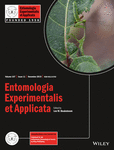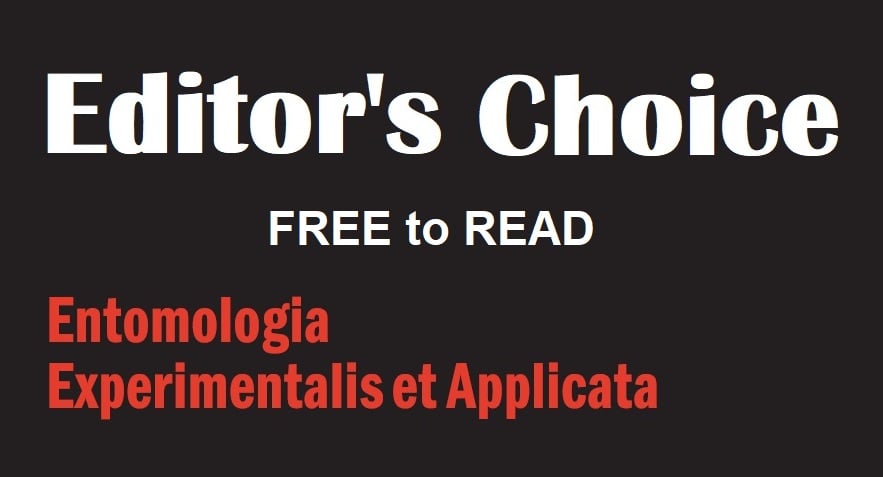Entomologia Experimentalis et Applicata
Journal list menu
Export Citations
Download PDFs
Issue Information
Original Articles
Enantiomers of fuscumol acetate comprise the aggregation-sex pheromone of the South American cerambycid beetle Psapharochrus maculatissimus, and likely pheromones of the cerambycids Eupromerella plaumanni and Hylettus seniculus
- Pages: 915-921
- First Published: 22 October 2019
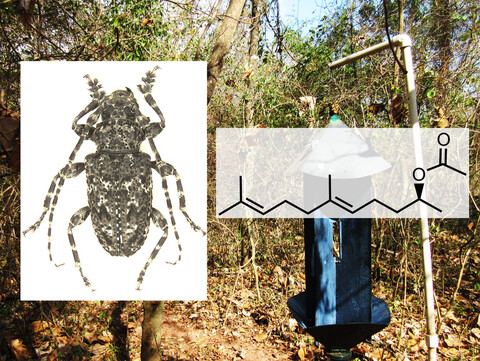
The male-produced aggregation-sex pheromone of the cerambycid beetle Psapharochrus maculatissimus (Coleoptera: Cerambycidae, Lamiinae) is composed of (S)-fuscumol acetate. The sympatric species Eupromerella plaumanni and Hylettus seniculus were specifically attracted to racemic and (R)-fuscumol acetate, respectively. Species in the cerambycid subfamily Lamiinae appear to manipulate the ratios of fuscumol acetate enantiomers to form species-specific signals.
Elevational contrast in predation and parasitism risk to caterpillars in a tropical rainforest
- Pages: 922-931
- First Published: 12 November 2019
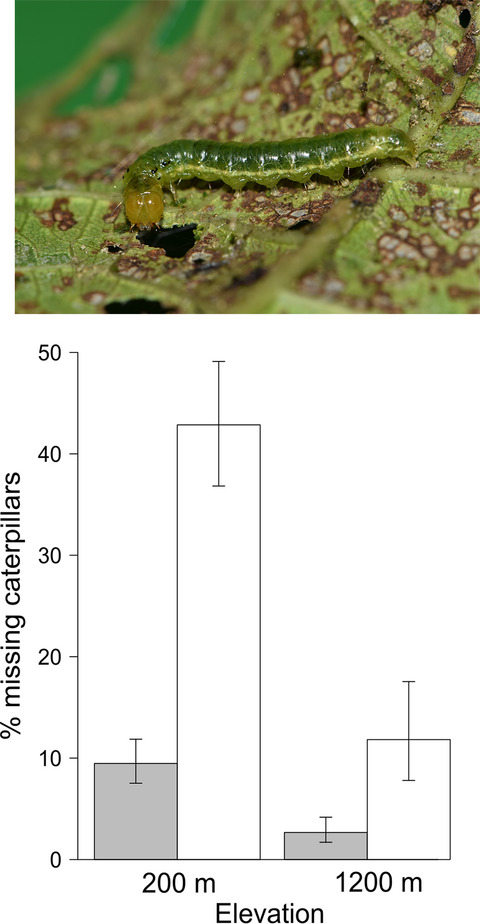
Live caterpillars of locally occurring Lepidoptera species were exposed to invertebrate predators and parasitoids at two elevations in primary tropical rain forest in Papua New Guinea. Caterpillar disappearance was significantly higher in the lowlands than in the highlands. The parasitism rate was not significantly different between the two elevations. The combination of disappearance and parasitism rate patterns implies that larval parasitoids face stronger pressure from invertebrate predators through higher predation of their hosts in the lowlands compared to the highlands.
Effect of adult feeding and timing of host exposure on the fertility and longevity of the parasitoid Anaphes flavipes
- Pages: 932-938
- First Published: 23 October 2019

We examine the effect of adult feeding and timing of host exposure on the fertility and longevity of the parasitic wasp Anaphes flavipes (Hymenoptera: Mymaridae), widely used in biological control against important crop pest beetles. A wasp's fertility is shown to be determined by her age at the time of parasitization, rather than by adult feeding. We therefore suggest that A. flavipes is a proovigenic species. Furthermore, adult feeding correlates with longevity in both females and males of A. flavipes.
Phorid species from Acromyrmex’s hosts and effect on their survival of two fungi proposed for the control of leafcutter ants
- Pages: 939-949
- First Published: November 2019
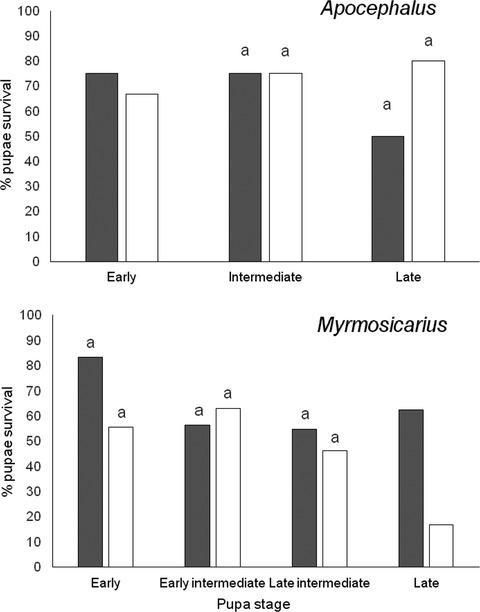
The developmental times, host size, and other aspects of the biology of Apocephalus spp. and Myrmosicarius spp. phorids (Diptera: Phoridae) parasitizing leafcutter ants (Hymenoptera: Formicidae) were determined. No effect of Beauveria bassiana and Trichoderma lentiforme, two fungi which are also considered as potential biocontrol agents of leafcutter ants, was found on parasitoid pupal survival. Therefore, the simultaneous use of both agents for the control of Acromyrmex leafcutter ants seems to be a promising strategy.
Effects of plant sex on insect abundance across three trophic levels in the perennial shrub Buddleja cordata
- Pages: 950-956
- First Published: 22 October 2019
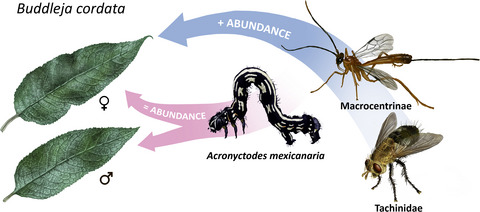
Throughout an entire growing season, we investigated the effects of plant sex on the abundance of a specialist leaf-chewing caterpillar, Acronyctodes mexicanaria (Lepidoptera: Geometridae), and the caterpillar's natural enemies (parasitoids) associated with the dioecious shrub Buddleja cordata (Scrophulariaceae). Plant sex did not significantly influence caterpillar abundance but did have an effect on the parasitoids (2.4× more abundant on female than on male plants). Male plants were found to have a higher concentration of phenolic compounds.
Anatomy of the stridulation apparatus of the beech leaf-mining weevil and characterization of, and behavioral responses to, stridulation sounds
- Pages: 957-968
- First Published: November 2019
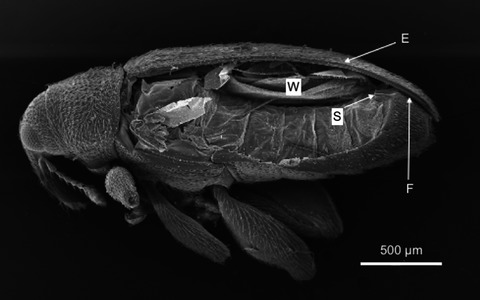
We investigated auditory signals and morphology of the stridulatory apparatus of adult Orchestes fagi (Coleoptera: Curculionidae), an invasive herbivore in Nova Scotia, Canada. We described sounds, and the stridulatory mechanism, and examined behavioral responses by playback of stridulation recordings. Females have a pars stridens that is longer and has more ridges than males, evidence of asymmetry was found in male pars stridens (the right side being longer), and playback of recorded sounds suggests females were repelled by distressed males.
Intercropping oilseed rape as a potential relay crop for enhancing the biological control of green peach aphids and aphid-transmitted virus diseases
- Pages: 969-976
- First Published: November 2019
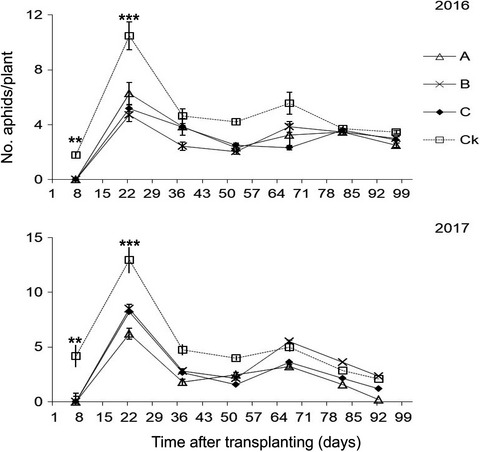
Field experiments were conducted in Longyan City (Fujian Province, China) in 2016 and 2017 to determine whether intercropping oilseed rape, Brassica napus (Brassicaceae), in tobacco fields, Nicotiana tabacum (Solanaceae), affects Myzus persicae (Hemiptera: Aphididae) and aphid-transmitted viral diseases. Winged aphids occurred later, incidence rates of diseases decreased, and tobacco yield and monetary value increased in intercropped fields. Our results suggest that intercropping oilseed rape in tobacco fields is a good approach to regulating and controlling aphids and their viruses.




